Shoulder Replacement
Shoulder pain is an extremely common complaint from patients, and there are many common causes of this problem. It is important to make an accurate diagnosis of the cause of your symptoms so that appropriate treatment can be directed at the cause. Shoulder ReplacementOsteoarthritis is the most common type of shoulder arthritis. Also called wear-and-tear arthritis or degenerative joint disease, osteoarthritis is characterized by progressive wearing away of the cartilage of the joint. As the protective cartilage surface of the joint is worn away by shoulder arthritis, bare bone is exposed within the shoulder.
Shoulder arthritis can affect the shoulder joint (gleno-humeral joint), or the Acromioclavicular joint between the clavicle (collarbone) and acromion (shoulder-blade).
Both osteoarthritis and inflammatory arthritis can affect these joints, leading to pain and stiffness.
Assessing Symptoms
Shoulder arthritis symptoms tend to progress as the condition worsens. What is interesting about shoulder arthritis is that symptoms do not always progress steadily with time. Often patients report good months and bad months, or symptom changes associated with weather changes. This is important to understand because comparing the symptoms of arthritis on one particular day may not accurately represent the overall progression of the condition.
Shoulder Joint Replacement
Although shoulder joint replacement is less common than knee or hip replacement, it is just as successful in relieving joint pain.
If nonsurgical treatments like medications and activity changes are no longer helpful for relieving pain, you may want to consider shoulder joint replacement surgery. Joint replacement surgery is a safe and effective procedure to relieve pain and help you resume everyday activities.
Anatomy
The shoulder joint has the largest range of motion as compared to all other joints in the body.
The shoulder is made up of three bones:
- upper arm bone (humerus)
- shoulder blade (scapula)
- and collarbone (clavicle)
The shoulder is a ball-and-socket joint between the scapula and humerus.
The ball, or head, of the upper arm bone, fits into a shallow socket in the shoulder blade. This socket is called the glenoid.
Description
In shoulder replacement surgery, the damaged parts of the shoulder are removed and replaced with artificial components, called a prosthesis.
The treatment options are either replacement of just the head of the humerus bone (ball), or replacement of both the ball and the socket (glenoid).
Causes
- Osteoarthritis
- Rheumatoid Arthritis
- Post-traumatic Arthritis: After a serious shoulder injury like fractures of the bones that make up the shoulder or tears of the shoulder tendons or ligaments may damage the articular cartilage over time causing shoulder pain and limiting shoulder function.
- Rotator Cuff Tear Arthritis: This is due to long-standing tears of the rotator cuff tendons and produces symptoms similar to osteoarthritis.
- Avascular Necrosis (Osteonecrosis): Avascular necrosis is a painful condition that occurs when the blood supply to the bone is disrupted.
- Severe Fractures
When the head of the upper arm bone is shattered, it may be very difficult to put the pieces of bone back in place. In addition, the blood supply to the bone pieces can be interrupted. In this case, a surgeon may recommend a shoulder replacement. Older patients with osteoporosis are most at risk for severe shoulder fractures.
People who benefit from surgery often have
- Severe shoulder pain that interferes with everyday activities
- Pain even while resting
- Loss of motion and/or weakness in the shoulder.
- Failure to substantially improve with other treatments such as anti-inflammatory medications, cortisone injections, or physical therapy.
Orthopaedic Evaluation
An evaluation with an orthopaedic surgeon consists of several components:
- A medical history
- A physical examination
- X-rays
- Other tests. Occasionally blood tests, a magnetic resonance imaging (MRI) scan, or a bone scan
Shoulder Replacement Options
- Total Shoulder Replacement
- Stemmed Hemiarthroplasty
- Reverse Total Shoulder Replacement
Complications
- Infection
- Prosthesis Problems
Preparing for Surgery

- Choose the right doctor
- Understand the procedure well -educate yourself
- Keep all your past medical records handy and assemble all the documents and other things required on admission, during the stay in the hospital and for discharge.
- As with all surgeries, there are a number of things that the hospital will ask you to do to contribute to the success of the operation.
- Pre-operative fitness tests are done, medical clearance is obtained (sugar levels and BP is maintained in the normal range), a few medications like blood thinners are generally stopped before surgery.
- If you have any questions or concerns, ask your doctor or hospital staff.
- Your doctor may want you to meet the Physical Therapist (PT) before surgery. The PT may give you some tips on preparing your house for rehabilitation
- Home Planning
Simple changes in your home before surgery can make your recovery period easier. For the first several weeks after your surgery, it will be hard to reach high shelves and cupboards. Before your surgery, be sure to go through your home and place any items you may need afterward on low shelves. When you come home from the hospital, you will need help for a few weeks with some daily tasks like dressing, bathing, cooking, and laundry.
The procedure to replace the shoulder joint with an artificial device usually takes about 2 hours.
About Surgery (Shoulder Replacement Implants)
The major types of artificial shoulder replacements are:
- Cemented Prosthesis
- Uncemented Prosthesis
- Reverse Shoulder Replacement
A cemented prosthesis is held in place by a type of epoxy cement that attaches the metal to the bone. An uncemented prosthesis has a fine mesh of holes on the surface. The bone grows into the mesh. Over time, this anchors the prosthesis to the bone.
Both types of artificial joints are widely used. Your surgeon may also use a combination of the two types. The surgeon determines the type of replacement joint based on your age, your lifestyle, and the surgeon’s experience.
Each prosthesis (artificial joint) is made up of two parts. The humeral component replaces the humeral head or the ball of the joint. The glenoid component replaces the socket of the shoulder, which is actually part of the scapula.

The humeral component is made of metal. The glenoid component is usually made of two parts. A metal tray attaches directly to the bone, and a plastic cup forms the socket. The plastic is very tough and very slick, much like the articular cartilage, it is replacing. In fact, you can ice skate on a sheet of this plastic without causing it much damage.
In reverse shoulder replacement, the ball and socket are reversed; the ball is placed on the shoulder blade and the socket is placed on the top of the arm bone. This reverse technique allows better function with there is a non-functioning rotator cuff.
Total shoulder replacement surgery alleviates pain by replacing the damaged bone and cartilage with a metal and plastic implant. The shoulder joint is a ball-and-socket joint, much like the hip joint. The ball is the top of the arm bone (the humerus), and the socket is within the shoulder blade (scapula). This joint allows people an enormous range of motion at the shoulder.
When shoulder replacement surgery is performed, the ball is removed from the top of the humerus and replaced with a metal implant. This is shaped like a half-moon and attached to a stem inserted down the center of the arm bone. The socket portion of the joint is shaved clean and replaced with a plastic socket that is cemented into the scapula.
After surgery, the patient is moved to the recovery room where the patient stays for several hours monitored by an anesthetist.
Recovery
Antibiotics are given to prevent infection.
Most patients are able to eat solid food and get out of bed the day after surgery.
Patients are most likely to be able to go home on the first, second, or third day after surgery.
Pain Management-Medications are often prescribed for short-term pain relief after surgery. Many types of medicines are available to help manage pain, including opioids, non-steroidal anti-inflammatory drugs (NSAIDs), and local anesthetics, or a combination of these medications is used to improve pain relief.
Physical therapy will begin soon after surgery, and when you feel less pain, you can start moving sooner and get your strength back more quickly.
Rehabilitation
A careful, well-planned rehabilitation program is critical to the success of a shoulder replacement. Gentle physical therapy is started soon after the operation. Your surgeon will provide you with a home exercise program to strengthen your shoulder and improve flexibility.
Recovery At Home
- After the surgery, your arm will be in a sling. Sling is required to support and protect the shoulder for the first 2 to 4 weeks after surgery.
- The elbow may also require support
- Wound care-Avoid soaking the wound in water until it has thoroughly sealed and dried. The staples will be removed several weeks after surgery.
- Exercise is a critical component of home care. Most patients are able to perform simple activities such as eating, dressing, and grooming within 2 weeks after surgery. Some pain with activity and at night is common for several weeks after surgery.
- Driving a car is not allowed for 2 to 4 weeks after surgery.
Do’s and Dont’s
- Don’t use the arm to push yourself up in bed or from a chair because this requires forceful contraction of muscles.
- Do follow the program of home exercises prescribed for you. You may need to do the exercises 2 to 3 times a day for a month or more.
- Don’t overdo it. Early overuse of the shoulder may result in severe limitations in motion.
- Don’t lift anything heavy for the first 2 to 4 weeks after surgery.
- Do ask for assistance whenever required
- Do avoid placing your arm in any extreme position, such as straight out to the side or behind your body for the first 6 weeks after surgery.
Many patients have experienced an improved quality of life after shoulder joint replacement surgery.

Dr. Manuj Wadhwa
Chairman & Executive Director- Elite Institutes of Orthopedics & Joint Replacement
- Ojas Hospitals, Panchkula
- Ivy Hospitals, Punjab
Awards Wining Doctor
- 2 Times World Book of Records
- 7 Times Limca Book of Records
Let’s Get In Touch

Sector 22, Panchkula
09:00 am - 04:00 pm
(By Prior Appointments)

Sector 71, Mohali
09:00 am - 04:00 pm
(By Prior Appointments)
Email us
Give us a Call
Book An Appointment








